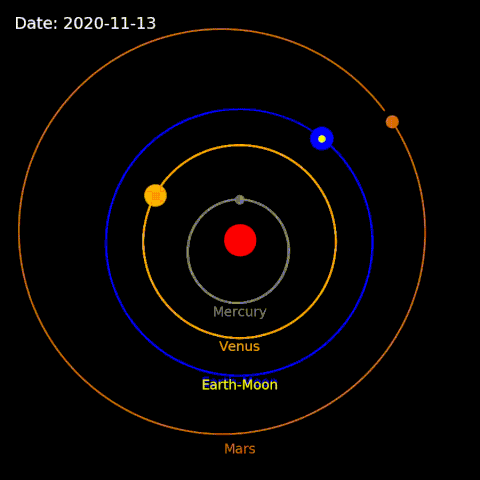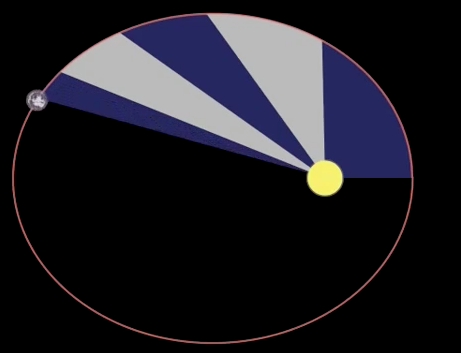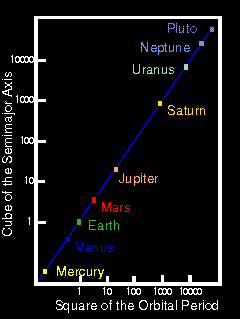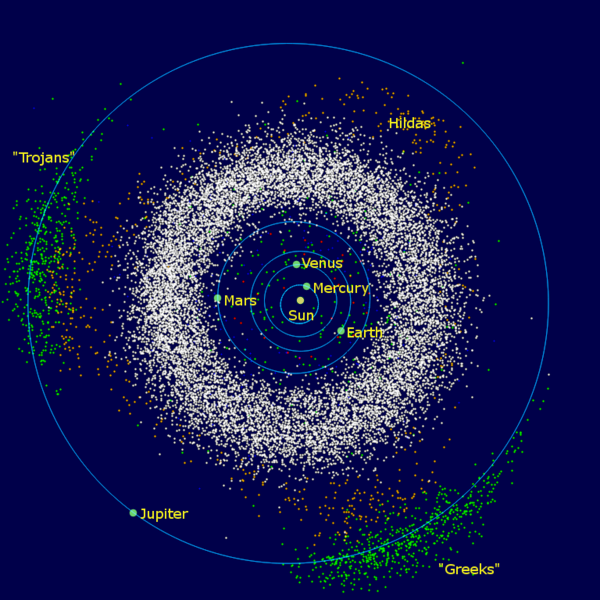
The orbits are nearly circular, however. The distortions are quite small and visually hard to see, in general:

The most radical thing Kepler did was to remove the assumption of circular motions, a motion viewed by the Greeks and Copernicus as sacred. This simple generalization allowed Kepler to make a model which was consistent the the data acquired by Tycho.
Law I: Law of Ellipses

The orbits are nearly circular, however. The distortions are quite small and visually hard to see, in general:


Click on the image to see a Youtube video
Law III: Harmonic Law
 The above is a log-log plot, log P vs. log a |
In tabular form,
 Note that the last two entries in the above table are discrepant. |
Something that can be gleaned from Kepler's 3rd Law of Planetary Motion is that if gravity is the force that holds the Solar System together, then beyond simply saying that planets with larger orbits take longer to orbit the Sun, it also says that planets with larger orbits travel more slowly in their orbits than do planets that orbit in smaller orbits (see the animation showing the Solar System orbits for Law I.
 |
The asteroid belt sits between the orbits of Mars and Jupiter. Compare the orbital period for an object that has orbit of size 4 A.U. to the orbital period of the Earth. Using Kepler's 3rd Law we have that the square of the orbital period measured in years isSo the orbital period of the asteroid measured in years is the square root of 64, that is, the orbital period of the asteroid is 8 years.
|